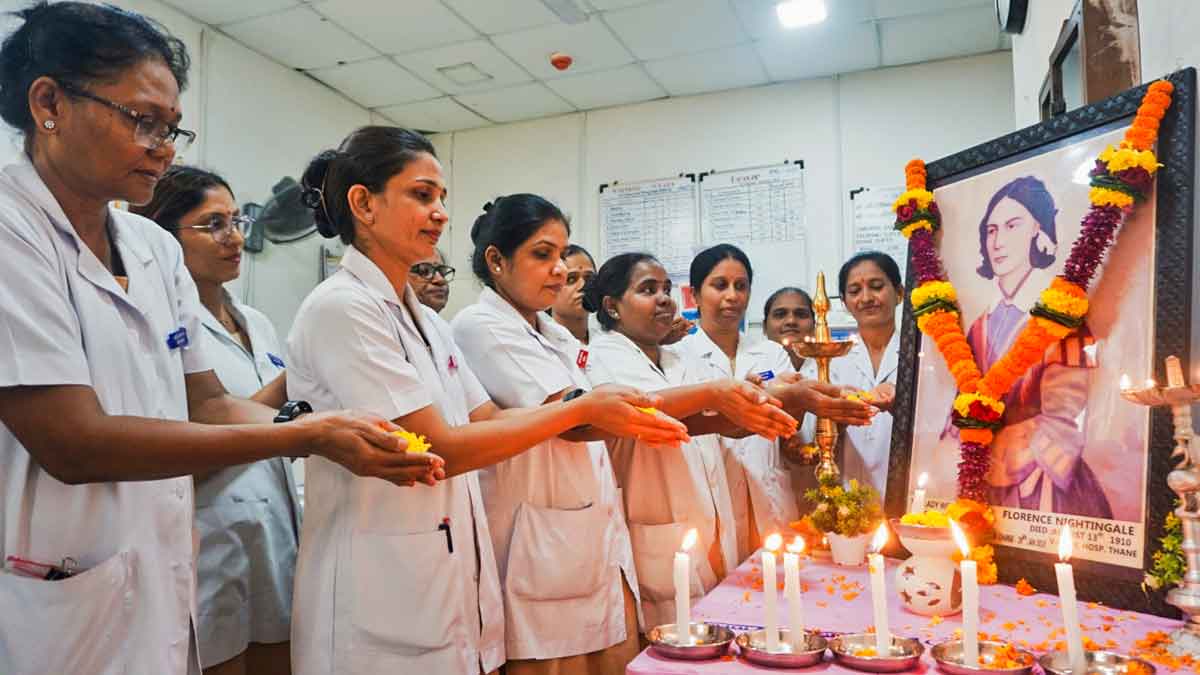55% of senior leadership positions in health ministry held by women | WHO report
 Nurses pay tribute to Florence Nightingale on her birth anniverary, celebrated as International Nurses Day, at a hospital, in Thane | PTI
Nurses pay tribute to Florence Nightingale on her birth anniverary, celebrated as International Nurses Day, at a hospital, in Thane | PTI
Five years since the release of the first State of the World’s Nursing Report in 2020, the recent report gives us an insight into the working conditions of the 29.8 million nursing workforce.
The data as reflected in the latest issue, records a 33 per cent hike in the total number of countries reporting to a central set of indicators as compared to the 2020 report.
Determinants of wage setting
Across different countries, wages and salaries of nurses can vary and so do the conditions that are taken into consideration while setting them. The below mentioned are some aspects that play a huge role in the determination of wages:
Government coordination and involvement
Labor and social policies
Health labour market conditions
Cost of living
Trade unions
Education and experience
Contract modalities
Fiscal pressures
Inequity in wage distribution
With women comprising a majority of the nursing workforce, the report states that there is a high concentration of women in the lower-paid occupational categories. Men are prominent in the highest-paid occupational categories.
This occupational segregation as characterised in the report, along with the above-discussed factors, makes this specific gender pay gap wider than those seen in many other sectors.
Despite women being a dominant force in the said workforce, their earnings do not reflect this dominance. The report cites a mean hourly 7 per cent gender pay gap among the 31 countries whose data was analysed.
The report observes that despite women making up a larger portion of the nursing workforce, men are consistently earning more than the majority.
The research also states that ‘women may be paid less than men even in the same occupation’. One might see the 7 per cent disparity as a mere one-digit number, but it perpetuates the inequity that is systematically embedded in the professional world.
Equality in representation – a ray of hope
The 2020 report stated that only one-by-fourth of the leadership positions across health and care were being held by women. In this year’s report, out of the 27 countries responding to the concerned indicators, ‘the average was 55% of senior leadership positions in the ministry of health were held by women’.
"This report contains encouraging news, for which we congratulate the countries that are making progress. However, we cannot ignore the inequalities that mark the global nursing landscape. On International Nurses Day, I urge countries and partners to use this report as a signpost, showing us where we’ve come from, where we are now, and where we need to go – as rapidly as possible," said WHO Director-General Dr. Tedros Adhanom.
This advancement is certainly one to be welcomed with open hands. Space is being made for women in the “glass elevator” that was once only welcoming towards men.
Health